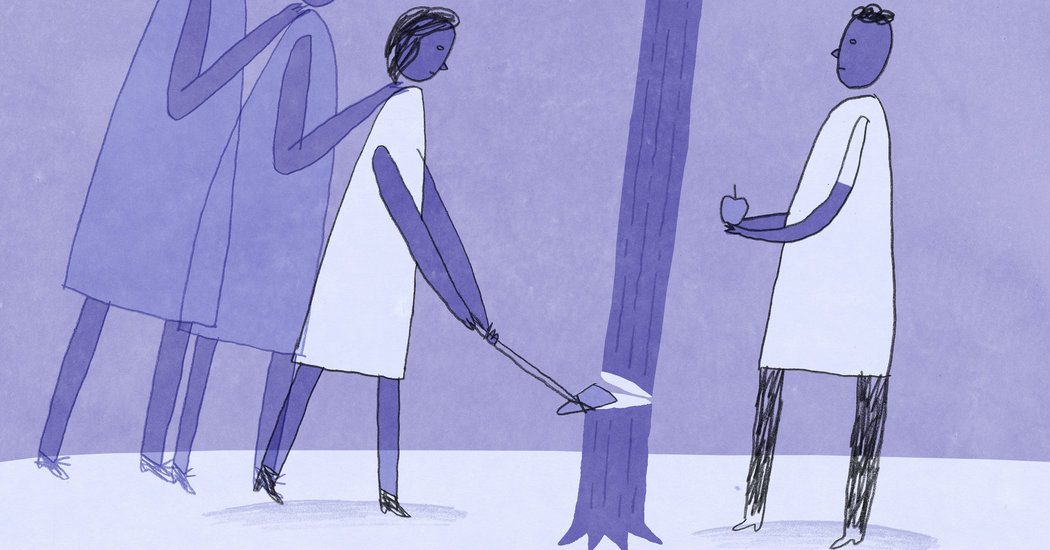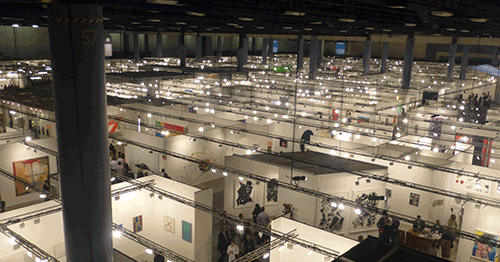In a year in which a three-hour-plus film, “Jeanne Dielman, 23, quai du Commerce, 1080 Bruxelles,” was named the best film of all time in the decennial Sight and Sound poll, and another three-hour movie, “Avatar: The Way of Water,” became the third-biggest box-office hit ever, it’s hard to imagine that anyone in the art or the business of movies is put off by long running times. But the announcement, in February, that Martin Scorsese’s new film, “Killers of the Flower Moon” (based on a book by the New Yorker writer David Grann), was going to be three hours plus was accompanied by a report that the Cannes Film Festival (coming in May) would be unwilling to screen it at such a length. Fortunately, the festival executives’ philistine rigidity gave way: after weeks of speculation regarding the length of the film (climbing as high as three hours and fifty-four minutes), it’s been confirmed that it will première at the festival (as of now, out of competition) at a run time of three hours and twenty-six minutes.
Another nearly three-hour movie, Ari Aster’s “Beau Is Afraid,” opened on April 14th; many prominent critics have damned the movie as “self-indulgent,” in large part for its length. A long movie, especially one that’s director-driven, proclaims its high ambition. And Scorsese’s films have always displayed vast ambitions, including by way of duration. Few of his films have come in under two hours, many push past two and a half hours, and his longest dramatic films have been among his most recent works.
Scorsese has, in the past decade, unleashed a mighty torrent of creative inspiration. His Oscar, in 2007, for the direction of “The Departed,” enshrined his status in the industry, however belatedly, and anointed him a venerable master at the top of his game—it turned him at once, in his mid-sixties, into a living icon of the art of movies, of movies as an art. I think that the Oscar also liberated him personally, left him feeling that he had nothing more to prove to the business and that he was ready to cut loose from whatever vestiges of expectations and norms he still deferred to. Moreover, that Oscar came at a moment when the studios were getting out of the kind of serious dramas that he makes, and when independent producers of many stripes (including streaming services) found benefits in allying themselves with this new instant celebrity of the art. “The Wolf of Wall Street” is one of the greatest of all modern movies, and it runs three hours; “The Irishman” is nearly as great, and in some ways even more ambitious and accomplished, and it runs three hours and twenty-nine minutes (and if I’d had to say the length without checking, I’d have said a full four hours, based not on the feeling of sitting for too long but on the feeling of a cinematic experience of an all-consuming amplitude). The length of “Killers of the Flower Moon” comes as no surprise—and, given the mighty achievement to match the mighty length of Scorsese’s two longest fiction films, it’s odd and dismaying to imagine anyone, especially the potentates of Cannes (who aren’t held to the commercial demands of film distributors), wishing that the forthcoming film would be any shorter.
The history of the length of movies takes place in two dimensions—on the axis of the ordinary and the axis of the extraordinary, or, of the rule and the exception. The average Hollywood movie got longer from the nineteen-thirties to the nineteen-fifties, and the expansion correlates with expansions in the art of movies from the early days of talking pictures through the postwar era. The greater length marks a shift in character psychology, from types to individuals, requiring more character development; it marks the rise, after the war, of independent productions that accorded directors more freedom; it marks the swell of a new directorial ambition, led by the example of Orson Welles’s “Citizen Kane.” It also reflects changes in the business, the changing habits of viewers, who were going to movies less often (owing in part to television and in part to suburbanization). As moviegoing became rarer, studios made films bigger experiences, ramping up spectacle to go with such technical enticements as wide-screen movies, stereo sound, and 3-D.
What’s fascinating is that, commercially, length has often worked. Not only was Hollywood’s longtime box-office champion the nearly four-hour-long “Gone with the Wind” but, in Hollywood’s troubled fifties and sixties, such three-hour-plus films as “The Ten Commandments,” “Ben-Hur,” “Spartacus,” and “Lawrence of Arabia” were major hits (as were “My Fair Lady,” ten minutes shy of the mark, and “Camelot,” one minute from it). Then “Fiddler on the Roof,” “The Godfather: Part II,” and “The Deer Hunter” were among the biggest hits of the following decade. In recent years, the length of the leading box-office champions has, on average, increased, as with such films as “Dances with Wolves,” “Schindler’s List,” “Titanic,” “The Lord of the Rings: The Return of the King,” “King Kong,” and “Pearl Harbor.”
Erich von Stroheim edited his third feature, “Foolish Wives,” to six hours plus; the studio executive Irving Thalberg cut it down to just under two.Photograph from Ronald Grant Archive / Alamy
The exceptions, the extraordinary among long films, are ones that have been made with overtly artistic intentions that run afoul of their producers’ commercial plans. The template for such movies was set just over a century ago, in 1922, with “Foolish Wives,” Erich von Stroheim’s third feature, a high-budget early masterwork. Stroheim edited it down to six hours plus; the studio executive Irving Thalberg, who was all of twenty-two, asserted his principle that producers, not directors, must and would control the industry, by commandeering the film and cutting it down to just under two. Power announces itself through displays of cruelty, including in Hollywood; there are many ways for producers to interfere with directors’ work (Thalberg simply fired Stroheim from his next film), but the simplest of them is merely to cut, on the pretext of commercial necessities. (In 1915, D. W. Griffith’s hectically innovative yet horrifically racist film “The Birth of a Nation,” which ran more than three hours, was a huge box-office hit, but in the early twenties, the two-hour feature was fairly standard for prestige productions, and most films were much shorter.) Orson Welles endured similar indignities with his great second feature, “The Magnificent Ambersons,” which started at a hundred and forty-eight minutes and from which the studio pulled an entire hour (with the additional insult that the studio rewrote parts and, hiring another director to shoot the material, shoehorned it in). In 1954, George Cukor made his masterwork, the remake of “A Star Is Born,” in close collaboration with its star, Judy Garland (the movie is her greatest, too), a musical that ran over three hours and from which the studio hacked twenty-eight minutes, thinking that the changes would enhance the movie’s box-office prospects. (The studio was wrong.)
The cruellest scandal is when critical opinion sides with the producers, bringing to mind the dictum that critics are like soldiers who fire on their own troops. One of the most appalling was the public assassination of Michael Cimino’s masterpiece, “Heaven’s Gate,” which, at its original run time of three hours and thirty-nine minutes, was received by critics and by industry people at its première with bewilderment, hostility, and derision. (Cimino, whose art of overwhelming images and infinitesimal details differed from that of the era’s other grand-scale filmmakers, had simply created a work so original and unusual that it was ahead of its time.) Cimino himself, desperate and panicked, took part in a drastic edit, cutting out seventy minutes; it didn’t help, not least, because advance word on the long version tarnished expectations. (The resuscitation of the long version—which restored Cimino’s uncompromised, overwhelming original vision—led to the rightful reassessment of the movie and the recognition of its greatness.)
At its première, Michael Cimino’s “Heaven’s Gate” was received by critics and by industry people with bewilderment, hostility, and derision.Photograph from United Archives / Alamy
In 2010, I wrote that the ideal lengths for movies are sixty-three minutes (an hour’s exposition capped by a tag scene) and three hours (an hour’s exposition followed by two hours of resolutions). They’re not the best lengths but the natural ones. The classic ninety-minute-to-two-hour feature is a compromise between two ideals, one of compression and the other, of expansion. Yet there’s nothing inherently wrong with such artifices; this compromise can be an immensely fruitful one, which, for better or worse, urges filmmakers to find creative, abstract, symbolic solutions to their dramatic problems. Perhaps the most famous of them is found in Jean-Luc Godard’s first feature, “Breathless.” He’d come up with a rough cut of two and a half hours but was contractually obligated to deliver a ninety-minute movie. Advised by his friend, the elder director Jean-Pierre Melville, to remove many scenes, Godard took a different approach: he cut freely within scenes and even within shots, leading to the notorious and celebrated jump cuts with which the film is identified and creating an agitated, jazz-like rhythm that has much to do with its insolent, youthful, invigorating charm. He both revealed the artifices and conventions on which most of the commercial film world depended and created a new kind of remixed, second-order art on the basis of those conventions. (The next colossal mindshift of the French cinema came with Jean Eustache’s 1973 film “The Mother and the Whore,” an intimate drama on an epic scale that considered the personal lives of young people in the light of the vast changes after the Events of May, 1968, which premièred at that year’s Cannes Film Festival; it’s three and a half hours long, and the reissue of a new restoration of it will be among the major New York movie events this summer. Two years later, “Jeanne Dielman” followed, all three hours and twenty-one minutes of it—and also premièred at Cannes.)
The long film is without conventions—it’s like turning a football field, with its sidelines and yard lines, into an open field, unmarked and unbounded and in demand of exploration. It’s therefore recalcitrant, its lack of pushback, its inherent freedom offering filmmakers the opportunity to discover the unknown at the risk of getting lost. The long film both provides directors with artistic freedom and symbolizes that freedom; as such, it’s a precious value and a treacherous challenge. What such length provides is more—more of whatever a filmmaker has to offer, more self-revelation, for better or worse. Ordinary filmmakers make long movies mere slogs: those whose ambition exceeds their artistry reveal their public-facing strivings and pleadings for recognition; but, for the greats, such as Scorsese, it’s a canvas as big as the world. ♦


